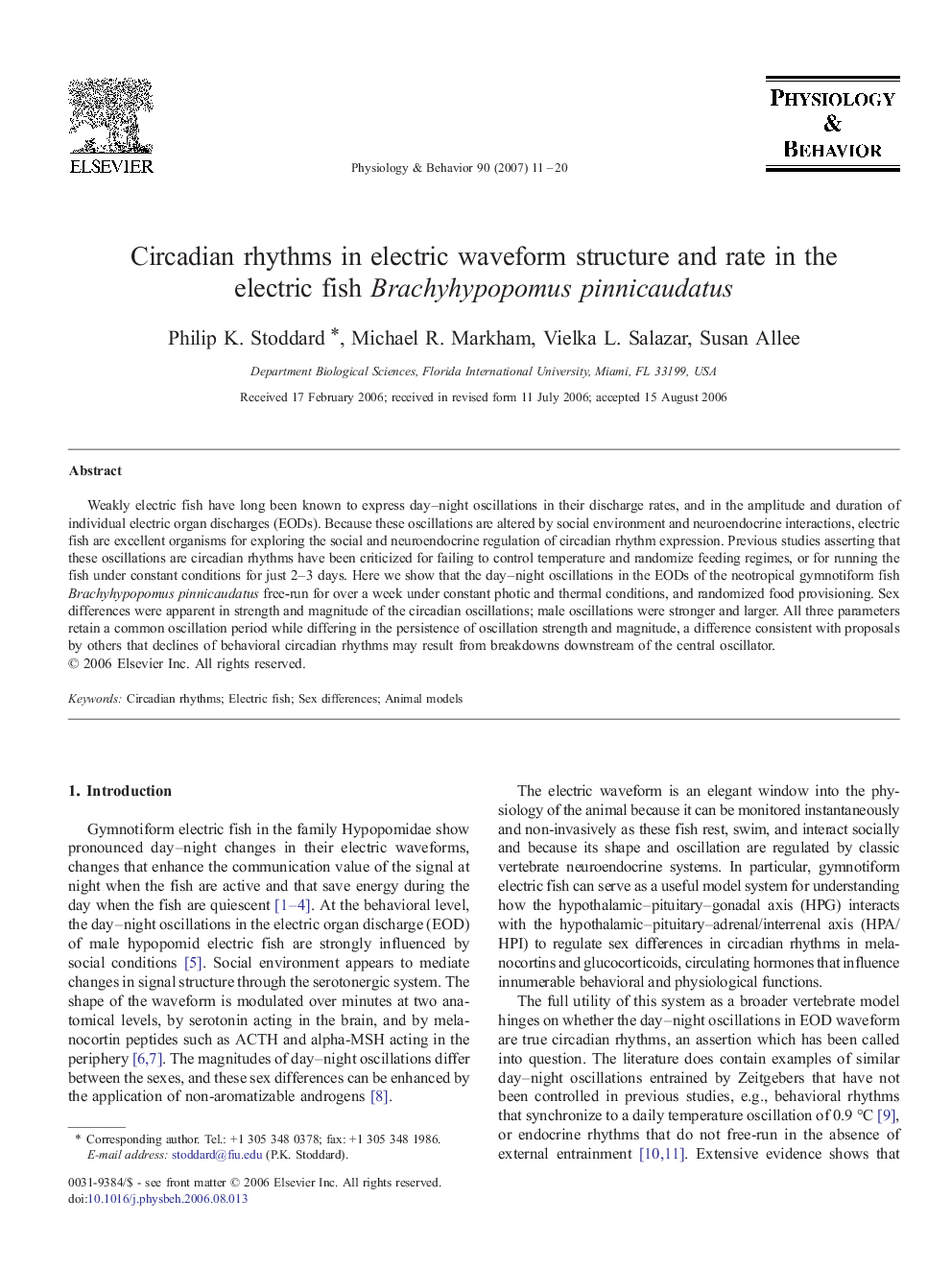| Article ID | Journal | Published Year | Pages | File Type |
|---|---|---|---|---|
| 2846358 | Physiology & Behavior | 2007 | 10 Pages |
Weakly electric fish have long been known to express day–night oscillations in their discharge rates, and in the amplitude and duration of individual electric organ discharges (EODs). Because these oscillations are altered by social environment and neuroendocrine interactions, electric fish are excellent organisms for exploring the social and neuroendocrine regulation of circadian rhythm expression. Previous studies asserting that these oscillations are circadian rhythms have been criticized for failing to control temperature and randomize feeding regimes, or for running the fish under constant conditions for just 2–3 days. Here we show that the day–night oscillations in the EODs of the neotropical gymnotiform fish Brachyhypopomus pinnicaudatus free-run for over a week under constant photic and thermal conditions, and randomized food provisioning. Sex differences were apparent in strength and magnitude of the circadian oscillations; male oscillations were stronger and larger. All three parameters retain a common oscillation period while differing in the persistence of oscillation strength and magnitude, a difference consistent with proposals by others that declines of behavioral circadian rhythms may result from breakdowns downstream of the central oscillator.
